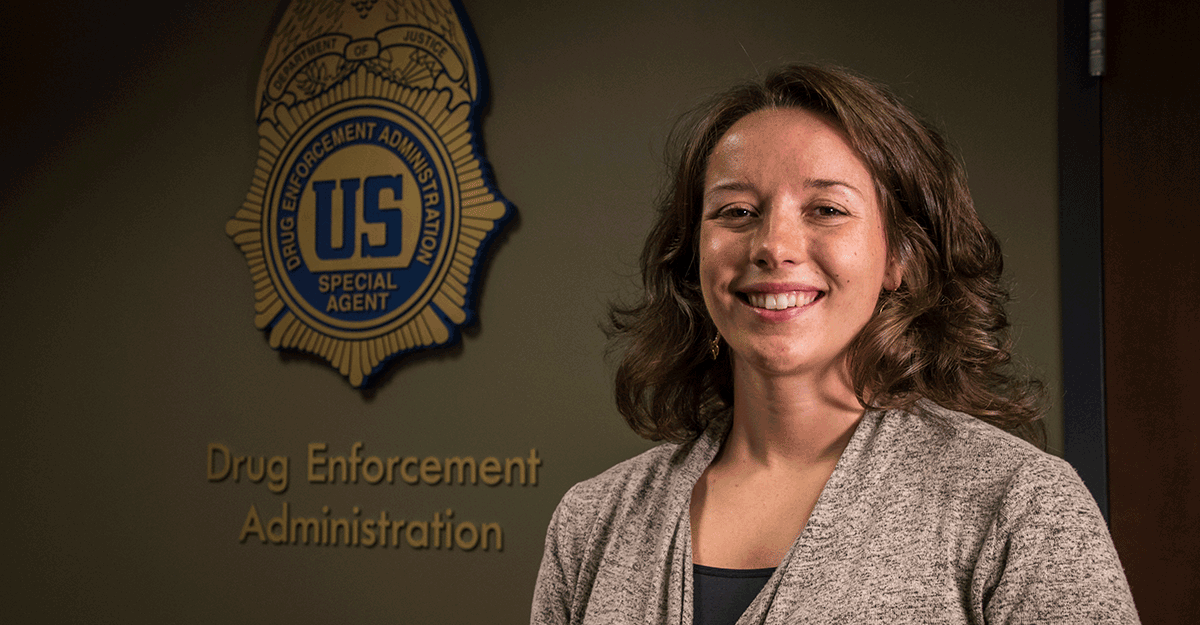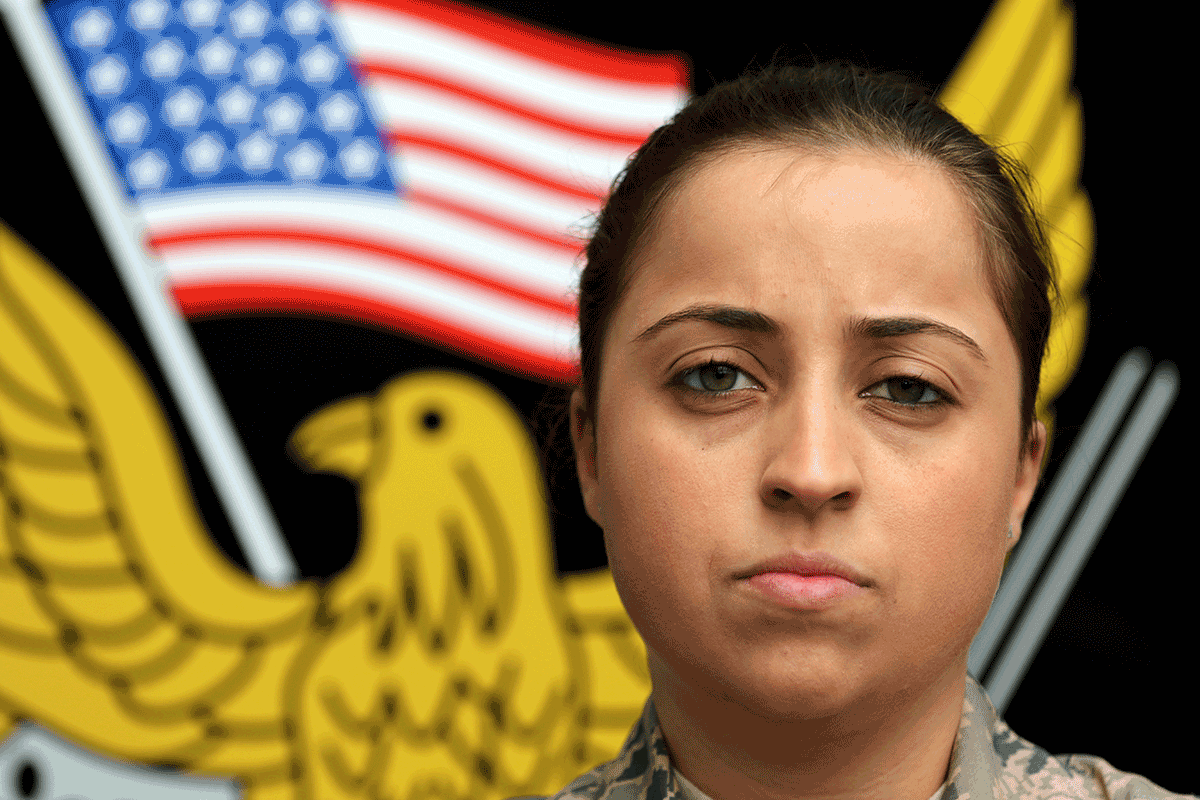National Red Ribbon Month
Airmen provide critical community support through work on CDTF
Story by 179th Airlift Wing Public Affairs
MANSFIELD, Ohio (10/31/19)
Nearly 40 years ago, President Richard Nixon declared drug abuse “Public Enemy No. 1.” Since then, law enforcement has been engaged in a war on drugs across the nation and abroad. Battles are now being fought by multiple agencies across Ohio with the common goal to protect and defend their homes and communities from this very real threat. State and local law enforcement agencies, the Drug Enforcement Administration and the Ohio National Guard have partnered to combat what has developed into an opioid epidemic at home.
“In the state of Ohio, our guard members are at law enforcement agencies doing analysis as well as civil operators providing prevention and education support to community-based organizations across the state,” said Maj. Ryan McMaster, 179th Airlift Wing intelligence officer, who also works full-time for the Ohio National Guard Counterdrug Task Force (CDTF). “We have about 40 folks participating in these activities across the state.”
Ohio has been heavily struck by the opioid epidemic that has devastated the nation, stealing loved ones from families and tearing apart communities. According to the National Institute on Drug Abuse, Ohio ranked second in highest rate of drug overdose deaths involving opioids in the United States in 2017.
“The Ohio National Guard counterdrug personnel assigned to the Cleveland DEA office have been a tremendous asset to the DEA intelligence unit,” said James Goodwin, resident agent in charge of the Cleveland DEA District Office. “They enhance our capabilities and our resources and they bring their experience in the military and the National Guard to working law enforcement projects.”
Since 2017, numerous agencies throughout Ohio have worked tirelessly to combat this disastrous epidemic, and have had success in their work. Ohio’s opiate overdoses declined 22% from the national average in 2018, and the future outlook for stopping this opiate epidemic is brighter thanks to individuals who dedicate their lives to ending this epidemic.
DEA Cleveland strives to not only react and combat drug abuse, but has an emphasis to also be proactive and raise awareness through public awareness campaigns within Northeast Ohio about opioid abuse and overdoses.
The DEA has been able to call on professionals who are trained in multiple skill sets, some of whom are Airmen with the 179th Airlift Wing, who have acquired their knowledge and experience either in professional military training settings or their college education, provided to them by the Ohio National Guard Scholarship Program.
Among the Airmen working with the DEA is Senior Airman Michael Early, an operations intelligence analyst. Even though Early has only worked for the DEA a short period of time, he has seen the impact it has on the community.
“Growing up, I started to see people that I knew or people I went to school with overdosing,” Early said. “Working here and seeing all that data and the lists of people who have overdosed, fatal or nonfatal, has really put into perspective how important the work we do here is because it’s actually making an impact on not just the community, but the community I live in.”
Another agency the Counterdrug Task Force supports is the Crime Strategies Unit at the Cuyahoga County Prosecutor’s Office. “The CSU is committed to understanding the nature of the crimes facing our communities,” said Eleina Thomas, managing attorney of the CSU at the Cuyahoga County Prosecutor’s Office. “We are invested in identifying the crime drivers in each community.”
The mission of the CSU is to harness the collective resources of the Cuyahoga County Prosecutor’s Office to develop and implement intelligence-driven prosecution strategies that address crime issues and target priority offenders.
Through these partnerships, the Ohio National Guard CDTF directly supports criminal investigations connected to the illegal drug nexus.
Tech. Sgt. Michael Hilliard, an operations intelligence specialist at the 179th Airlift Wing, Mansfield, Ohio, and analyst with the Ohio National Guard Counterdrug Task Force, actually works part-time at both the Cleveland DEA office and the Cuyahoga County Prosecutor’s Office CSU.
“These agencies are already cooperating,” Hilliard said. “I just happen to have a foot in both worlds to help from both sides.” There is definitely a connection between violent crime and drugs, Thomas said, so it has been beneficial having Hilliard at the prosecutor’s office.
“He’s been able to bridge the gap between our office, the DEA, as well as the local law enforcement narcotics units,” Thomas said. “He is able to look at our cases here and see what the connections are to current investigations. We’ve been able to suggest proffering certain individuals based on the information that Hilliard has discovered.”
Hilliard said he is able to help law enforcement, from the beginning, identify individuals responsible and directly see that impact.
“Everything from the initial, ‘we think this person or phone is responsible,’ to identifying that person and actually locking them up,” Hilliard said. “That’s probably the best feeling, when you get someone off the streets that you know has been related to fatal and nonfatal overdoses.”
Staff Sgt. Carolyn Kinzel, C-130 loadmaster with the 179th Airlift Wing and Ohio Air National Guard Counterdrug Task Force analyst with the Cleveland DEA, is making an impact with her training from Ohio University in geospatial sciences.
Although Kinzel is an analyst and works very hard to help identify and arrest drug dealers, she is also making an impact assisting the civil operators’ role in public health, education and prevention.
“We can’t just arrest our way out of this drug fight and opioid epidemic,” McMaster said. “We have to find innovative ways to educate and prevent drugs from coming into the hands of our youth so that’s a part of the civil operators’ role.”
Law enforcement strives to remove drugs from communities, but after 40 years of attacking the sources and dealers, it’s evident the addicted continue to find a way to use. Law enforcement is making efforts to protect these habitual users from accidental overdose of fentanyl, a drug many users are unaware is being mixed in to their otherwise familiar habit.
Fentanyl is a powerful, synthetic opioid that is 50 times more potent than heroin, Kinzel said. Unbeknown to users, some dealers are mixing fentanyl with other drugs such as heroin, cocaine, methamphetamine and MDMA. Because of fentanyl’s high potency, it takes very little to produce a high, making it a cheaper option for the dealers. In doing so, this leads to unintentional overdoses.
One of Kinzel’s most recent accomplishments through her work has touched the community of Cleveland, potentially saving 15,000 to 20,000 lives from accidental fentanyl overdoses.
The Cleveland City Police Department had access to approximately 15,000-20,000 fentanyl test stripes, which gives users the ability to test their drugs for fentanyl before consuming, potentially saving their lives. The police provided Kinzel with their overdose data, and from that she created a map that identified over 100 businesses that were in areas ranked high in overdoses to effectively place test strip distribution points.
“I jumped on this opportunity to exercise my mapping skills from my degree; I was happy to use something I studied in college to impact the community in a direct way,” Kinzel said. “We are directly affecting the population that needs the most help, the people who haven’t gotten treatment and are still addicted. Using the map that I created, we can give them these tools.”
Hilliard is from Northeast Ohio, so he has the privilege of working with the CDTF and law enforcement agencies in an area where he grew up. He is trying to give back and contribute to the community.
“We have ways to help our community and citizens of the state beyond our one weekend a month and two weeks in the summer,” Hilliard said. “It’s not always about deploying somewhere else or hurricane and emergency response. This is an additional way that we can help the community.”




